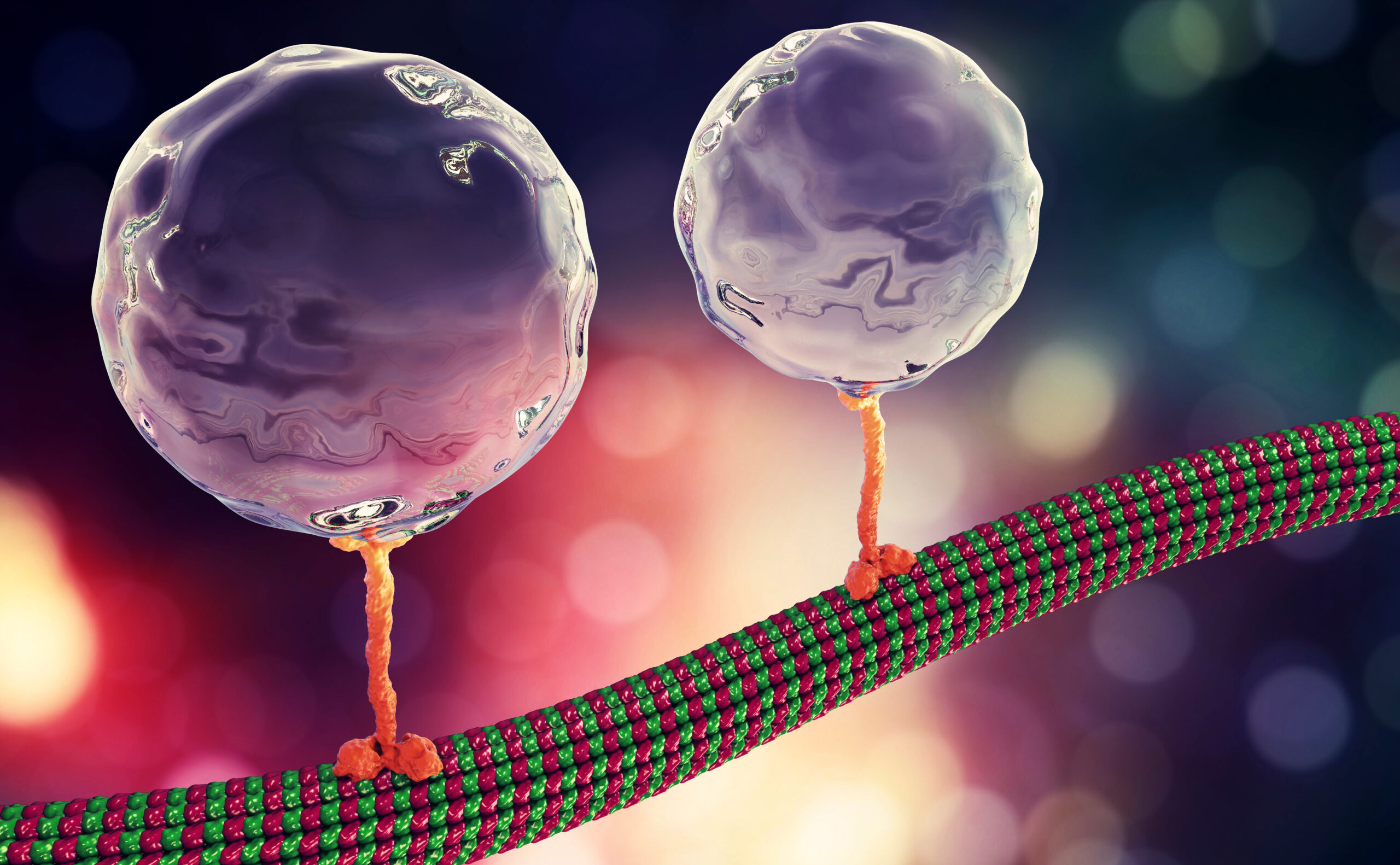Should We Expect Efficiency Inside the Cell?
One of my favorite planes is the SR-71 Blackbird—largely because of its extraordinary performance abilities. Even with a weight of around 100,000 pounds, the SR-71 blackbird achieves speeds in excess of Mach 3, with a top reported speed of near 2,200 mph. Additionally, this massive aircraft flies at altitudes above 80,000 feet, more than twice as high as the highest commercial flights. These speed and altitude capabilities allow the SR-71 Blackbird to simply outrun most surface-to-air missiles. No one questions the incredible design exhibited by the SR-71, yet when it sits on the runway ready for takeoff, it leaks fuel. Granted the fuel leaks were measured in drops per minute, but any fuel leakage on such a fantastic plane raises the question of who messed up? As it turns out, the fuel leak was a design feature crucial to the SR-71’s amazing flying capabilities. We see a similar scenario in Kinesin-1, an important biochemical molecule in the cell.
Kinesin-1: The Cell’s Cargo Mover
Kinesin-1 moves vesicles around cells by “walking” along rod-like protein assemblies called microtubules (see video below). Kinesin-1 uses adenosine triphosphate (ATP) as fuel to move around. However, when a team of researchers at Yamaguchi University in Japan measured the motion of Kinesis-1 along the microtubules, they found that up to 80% of the energy released from ATP generated heat instead of movement!
As a Christian, I find such results disturbing. Most of the energy from ATP dissipated as heat represents an incredible inefficiency—specifically related to a crucial cell function of moving materials around. Why would God make such an important cellular function so inefficient?
Such inefficiency reminds me of the discovery a few decades ago that as little as 2–3% of the DNA in human cells codes for genes. Many scientists heralded all this junk DNA as potent evidence of naturalistic evolution. DNA contains the information necessary to produce any particular type of animal or plant (or bacteria or archaea). Mutations in the DNA should produce different functional organisms that natural selection would pare down to the most fit to survive. This process leaves DNA littered with junk mutations that were either neutral or at least not so detrimental that the organism would die off. If evolution were true, then the DNA of organisms should contain a large amount of vestigial DNA from this contingent, historical process.
Given this view of junk DNA, a description of ATP’s inefficiency in a Physics Focus article struck me as odd. According to Philip Ball (emphasis added):
“Biophysicist Takayuki Ariga of Yamaguchi University in Japan and his co-workers recently reported that kinesin seems surprisingly inefficient. In experiments where isolated kinesin molecules moved along microtubules on a glass surface, they found that about 80% of the energy consumed from ATP is dissipated as heat, rather than converted into motion. That result seemed odd to the researchers: one would expect such biomolecules to be adapted by evolution to do their job efficiently.“
Why would we expect evolution to generate a vast swath of junk DNA (which requires lots of energy to replicate) but then also expect a protein to move about the cell in an efficient fashion? The expectation of high efficiency seems more appropriate in a view where a creator designed the mechanisms operating in the cell.
As scientists continued to research the operation of Kinesin-1, they recognized that much noisier conditions exist inside the cell than outside on a piece of glass. Given this fact, scientists wanted to know whether this noise affected the energy conversion rate.
The Efficiency of Kinesin-1
To investigate further, they attached small (~500 nanometer) polymer beads to the Kinesis-1 molecule and then used an infrared laser like a set of “optical tweezers” to grab onto the beads.1 By varying the intensity and location of the laser, they could mimic the type of noise experienced by Kinesin-1 inside the cell. Many tests with the laser setup showed a dramatic increase in efficiency of Kinesin-1 movement—specifically, the molecule sped up—under a load. More significantly, the acceleration of Kinesin-1 increased with the size of the load. Additionally, it appears that many other proteins and enzymes in the cell will experience similar efficiency gains when tested under conditions mimicking those inside the cell (although more tests are needed to confirm this).
When taking a quick look at the SR-71 blackbird and seeing it leaking fuel on the runway, you could draw a reasonable conclusion that the engineers had failed to design the aircraft well. However, a closer analysis reveals that the engineers intentionally designed the SR-71 blackbird in a way that would leak fuel on the ground. Flying at the incredible speeds the aircraft can achieve causes the fuel tanks to heat up and expand. If the tanks were sealed on the ground, the extreme heat during flight would make the tanks crack and explode. Stated another way, when the SR-71 fulfills its purpose in flight, all its components behave exactly as designed—even if it looks like failure when sitting on the runway.
In similar fashion, Kinesin-1 acts like a poorly designed molecule in the pristine conditions of the lab. However, when it operates in the noisy environment of the cell, it performs beautifully—just like it was designed to do.
Endnotes
1. Takayuki Ariga et al., “Noise-Induced Acceleration of Single Molecule Kinesin-1,” Physics Review Letters 127, no. 17 (October 22, 2021): 178101, https://journals.aps.org/prl/abstract/10.1103/PhysRevLett.127.178101.






